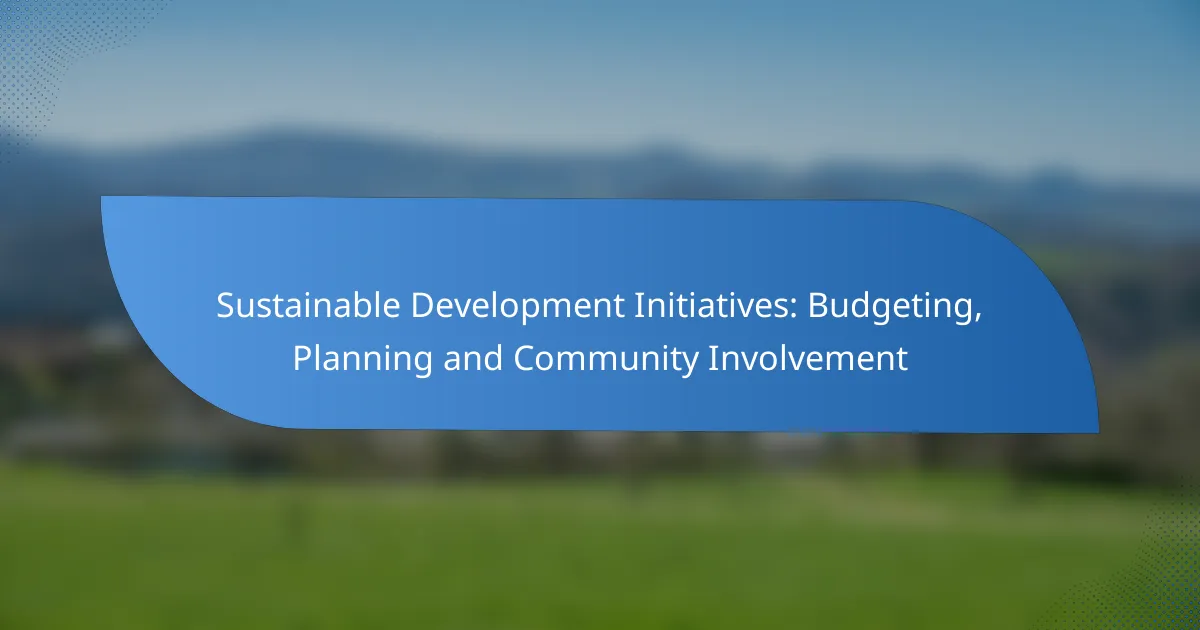Sustainable development initiatives require careful budgeting, planning, and active community involvement to effectively address environmental, economic, and social challenges. By employing strategic frameworks and engaging local populations, these initiatives can foster collaboration and resource sharing, ultimately enhancing both community well-being and environmental sustainability.
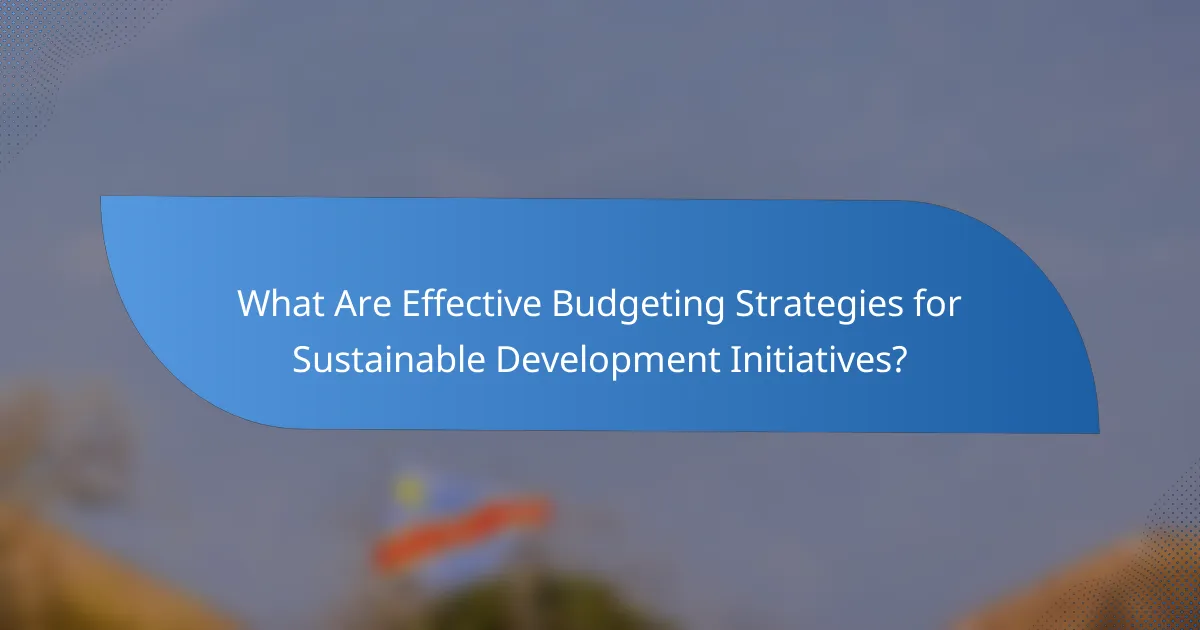
What Are Effective Budgeting Strategies for Sustainable Development Initiatives?
Effective budgeting strategies for sustainable development initiatives focus on maximizing resource allocation while ensuring community needs are met. These strategies help organizations plan, implement, and monitor projects that promote sustainability and social equity.
Zero-based budgeting
Zero-based budgeting (ZBB) requires every expense to be justified for each new period, starting from a “zero base.” This method ensures that all expenditures align with current project goals and community needs, rather than relying on previous budgets.
To implement ZBB, stakeholders must assess each program’s value and necessity, which can lead to more efficient resource allocation. However, it can be time-consuming and may require extensive data collection and analysis.
Participatory budgeting
Participatory budgeting involves engaging community members in the budgeting process, allowing them to influence how funds are allocated. This approach fosters transparency and accountability, ensuring that the budget reflects the priorities of those it serves.
To effectively implement participatory budgeting, organizations should hold workshops and meetings to gather input from diverse community members. This method can increase public trust and support for initiatives but may require additional time and resources to facilitate discussions.
Incremental budgeting
Incremental budgeting is a straightforward approach where the previous year’s budget is adjusted for the new period, typically by adding a percentage increase or decrease. This method is simple to implement but may not effectively address changing community needs or project goals.
While incremental budgeting can save time, it risks perpetuating inefficiencies from past budgets. Organizations should regularly review and adjust their budgets to ensure they remain relevant and effective in achieving sustainable development objectives.
Outcome-based budgeting
Outcome-based budgeting focuses on the results and impacts of spending rather than the inputs. This strategy requires organizations to define clear objectives and measure performance against those goals, ensuring that funds are used effectively to achieve desired outcomes.
To adopt this approach, organizations should establish key performance indicators (KPIs) and regularly assess progress. While this method can enhance accountability, it may require more sophisticated data collection and analysis capabilities.
Activity-based budgeting
Activity-based budgeting allocates funds based on the specific activities required to achieve project goals. This method helps organizations understand the true costs associated with each activity, leading to more informed decision-making.
To implement activity-based budgeting, organizations should identify all necessary activities and their associated costs. This approach can improve resource efficiency but may require detailed planning and tracking to ensure accuracy and accountability.

How Can Communities Get Involved in Sustainable Development?
Communities can actively participate in sustainable development through various initiatives that promote collaboration, education, and resource sharing. Engaging in these activities not only enhances local environments but also strengthens community ties.
Community workshops
Community workshops are interactive sessions where residents can learn about sustainable practices and share their ideas. These workshops often cover topics such as waste reduction, energy efficiency, and sustainable agriculture.
To maximize participation, consider hosting workshops at accessible locations, such as community centers or schools, and at convenient times. Providing refreshments and materials can also encourage attendance.
Volunteer programs
Volunteer programs allow community members to contribute their time and skills to local sustainability projects. These initiatives can range from tree planting and clean-up drives to educational outreach in schools.
To attract volunteers, clearly communicate the impact of their efforts and offer flexible participation options. Recognizing volunteers through events or certificates can enhance motivation and retention.
Public consultations
Public consultations provide a platform for community members to voice their opinions on sustainable development plans. These gatherings can take the form of town hall meetings or online forums, allowing for diverse input.
To ensure effective consultations, provide clear information on the issues at hand and facilitate open dialogue. Summarizing feedback and sharing how it influences decisions can foster trust and engagement.
Partnerships with local organizations
Forming partnerships with local organizations can amplify the impact of sustainable development initiatives. Collaborating with non-profits, schools, and businesses can bring additional resources and expertise to projects.
When establishing partnerships, align goals and ensure mutual benefits. Regular communication and joint events can strengthen these relationships and enhance community involvement.
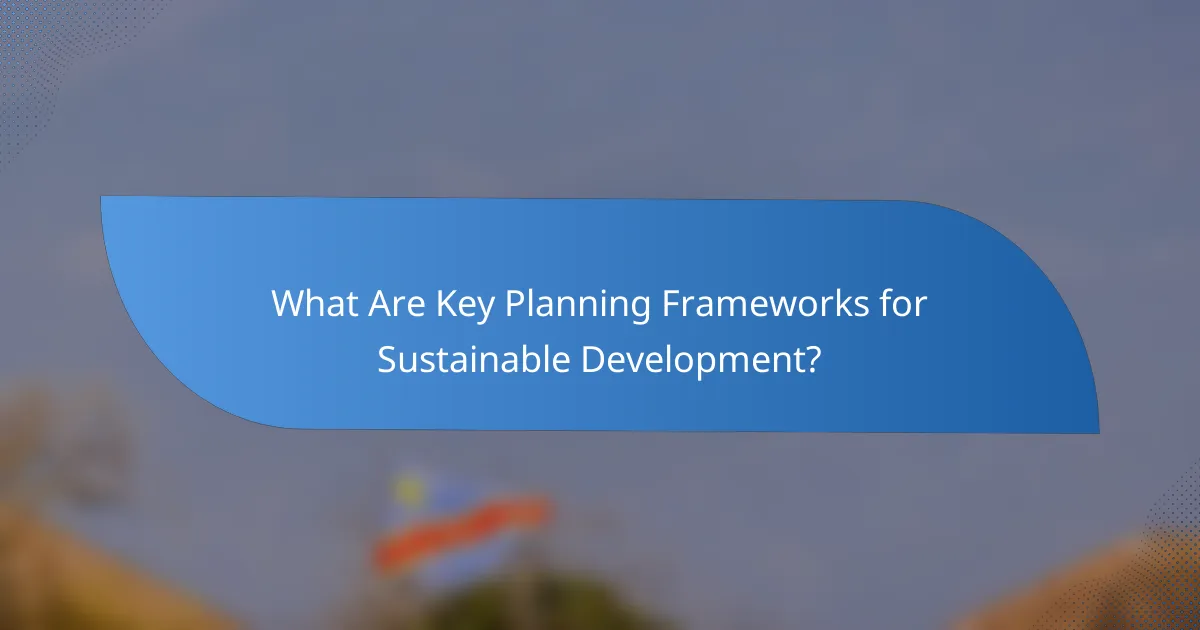
What Are Key Planning Frameworks for Sustainable Development?
Key planning frameworks for sustainable development include integrated planning, adaptive management, and strategic environmental assessment. These frameworks help ensure that development initiatives are environmentally sound, economically viable, and socially equitable.
Integrated planning
Integrated planning involves coordinating various sectors and stakeholders to create a cohesive approach to sustainable development. This method ensures that economic, social, and environmental factors are considered simultaneously, leading to more effective outcomes.
To implement integrated planning, stakeholders should engage in collaborative decision-making processes. This can include public consultations and workshops to gather input from community members, ensuring that diverse perspectives are included in the planning stages.
Adaptive management
Adaptive management is a flexible approach that allows for adjustments based on new information and changing conditions. This framework emphasizes learning from outcomes and making iterative changes to improve sustainability efforts over time.
Practitioners should establish clear metrics for success and regularly review progress. For example, if a community project aimed at reducing waste is not meeting its targets, adaptive management would involve reassessing strategies and implementing new solutions based on feedback and data.
Strategic environmental assessment
Strategic environmental assessment (SEA) is a systematic process used to evaluate the environmental impacts of proposed policies, plans, or programs. This framework helps identify potential negative effects early in the planning process, allowing for mitigation strategies to be developed.
Implementing an SEA typically involves a series of steps, including scoping, impact assessment, and public participation. By integrating SEAs into planning, decision-makers can ensure that environmental considerations are prioritized, ultimately leading to more sustainable outcomes.
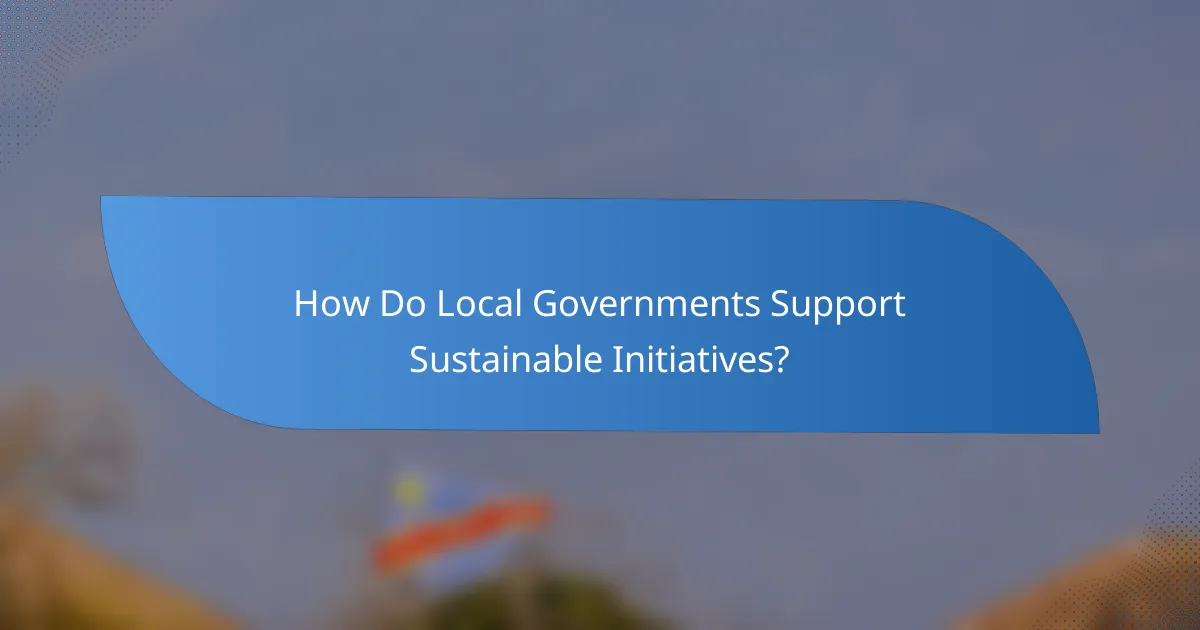
How Do Local Governments Support Sustainable Initiatives?
Local governments play a crucial role in supporting sustainable initiatives through various mechanisms, including policy incentives, funding programs, and technical assistance. These efforts aim to promote environmentally friendly practices while engaging communities in the planning and implementation processes.
Policy incentives
Policy incentives are tools that local governments use to encourage sustainable practices among businesses and residents. These can include tax breaks, grants, or zoning adjustments that favor eco-friendly projects. For example, a city might offer reduced property taxes for buildings that meet energy efficiency standards.
Additionally, local governments may implement regulations that require sustainability measures, such as mandatory recycling programs or energy-efficient building codes. These policies not only foster a culture of sustainability but also help communities meet broader environmental goals.
Funding programs
Funding programs are essential for financing sustainable initiatives at the local level. Governments often allocate budgetary resources to support projects that promote renewable energy, waste reduction, and green infrastructure. For instance, a municipality might set aside a portion of its budget to fund community solar projects or urban green spaces.
Local governments may also partner with state or federal agencies to access additional funding sources, such as grants or low-interest loans. These financial resources can significantly lower the barriers to entry for communities looking to implement sustainable practices.
Technical assistance
Technical assistance involves providing expertise and support to help communities develop and implement sustainable initiatives effectively. Local governments may offer workshops, training sessions, or one-on-one consultations to guide residents and businesses in adopting best practices.
For example, a local government might provide resources on energy audits or sustainable landscaping techniques. This support not only enhances community knowledge but also builds capacity for long-term sustainability efforts, ensuring that initiatives are successful and sustainable over time.
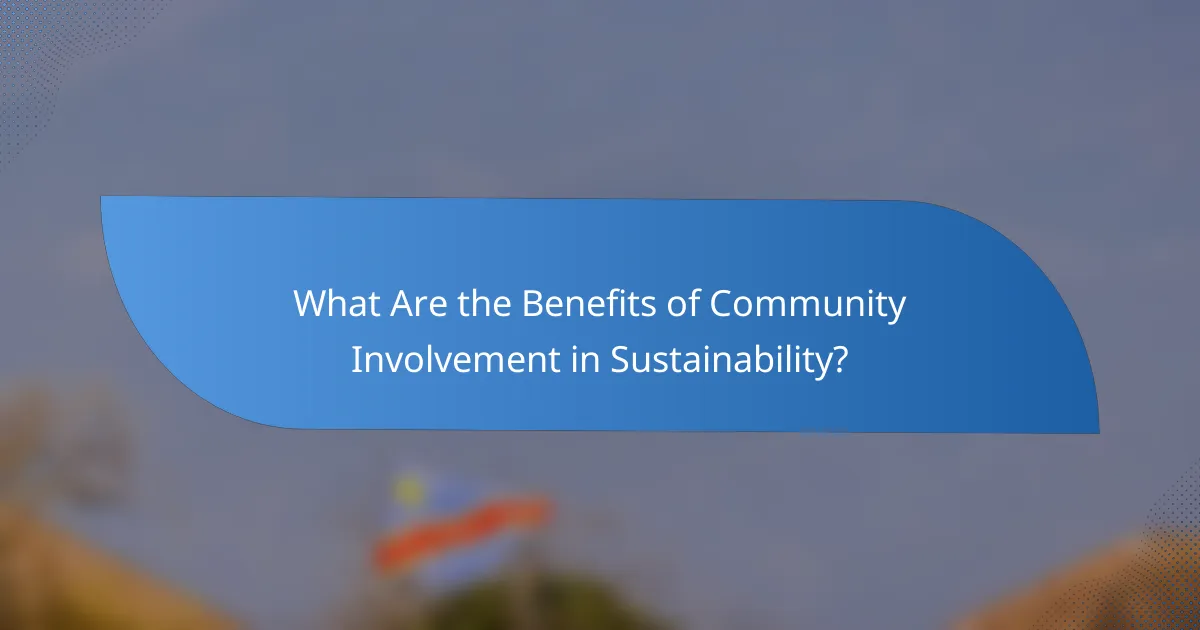
What Are the Benefits of Community Involvement in Sustainability?
Community involvement in sustainability initiatives fosters a sense of ownership and responsibility among residents, leading to more effective and lasting environmental solutions. Engaging local populations enhances the relevance and applicability of sustainability efforts, ensuring they align with community needs and values.
Enhanced local knowledge
When communities participate in sustainability projects, they contribute valuable local knowledge that can significantly improve project outcomes. Residents often have insights into the specific environmental challenges and resources unique to their area, which can inform better decision-making.
For example, community members may know the best times for planting native species or the most effective methods for conserving water based on local climate conditions. This localized expertise can lead to more tailored and successful sustainability strategies.
Increased accountability
Community involvement enhances accountability in sustainability initiatives by ensuring that local stakeholders have a voice in the decision-making process. When residents are actively engaged, they are more likely to hold project leaders and local governments accountable for their commitments and actions.
To foster this accountability, communities can establish regular meetings or forums where progress is discussed, and feedback is encouraged. This transparency helps build trust and encourages ongoing participation, making it easier to identify and address any issues that arise during project implementation.
